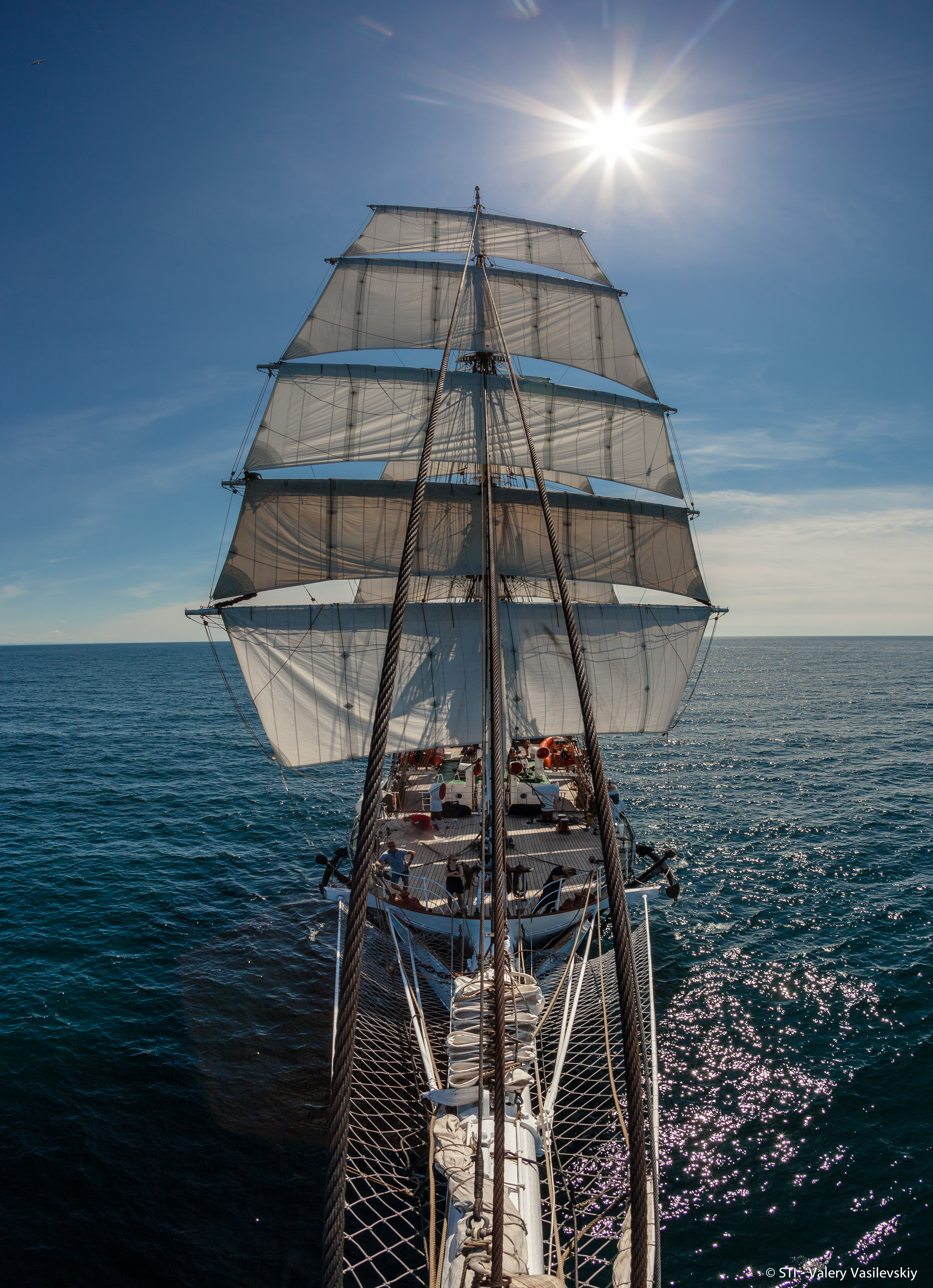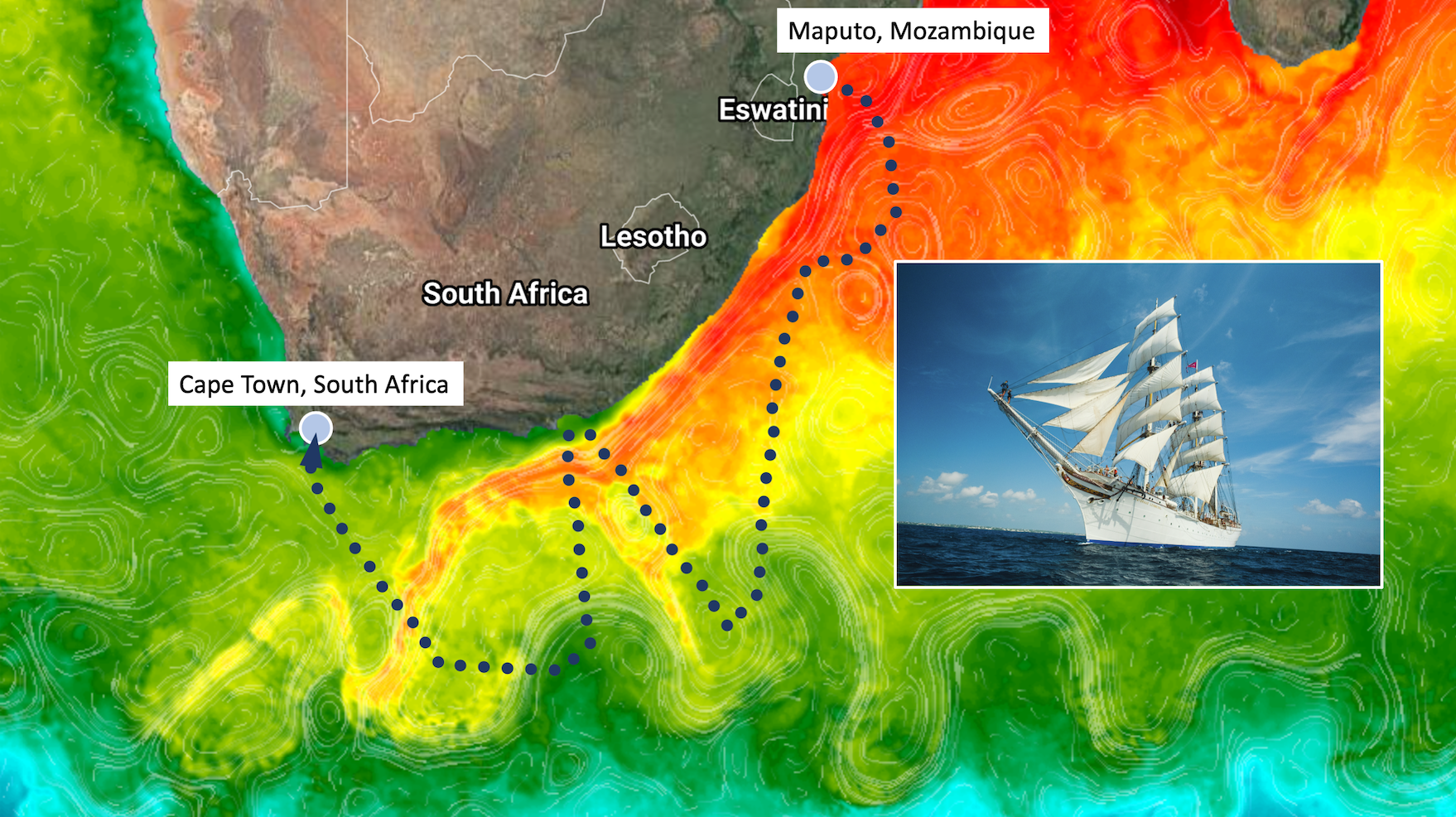The Nansen Center and European Space Agency
ADVANCED OCEAN SYNERGY TRAINING COURSE ONBOARD THE STATSRAAD LEHMKUHL
3-13 January 2023
From Maputo to Cape Town
Background for the training course
Satellite measurements play an incredibly important role in operational oceanography systems because they provide the quality-synoptic regular repeat data necessary to predict the state of our ocean. The Copernicus initiative, headed by the European Commission (EC) in partnership with the European Space Agency (ESA), is the most ambitious Earth observation programme to date and provides accurate, timely and easily accessible information to improve the management of the environment, understand and mitigate the effects of climate change and ensure civil security. The Copernicus Marine Environment Monitoring Service (CMEMS) uses satellite and in situ measurements of our ocean 24 hours a day, 365 days per year to generate regular and systematic reference information on the physical state, variability and dynamics of the ocean, ice and marine ecosystems for the global ocean and the European regional seas. Its an exciting and huge system bringing the best up-to-date near real time ocean information to everyone free of charge.

Earth Observation satellites we have in place today providing this amazing capability are the product of a huge number of people with a collective vision. Our future capability to monitor, understand and act on ocean issues is predicated on their evolution. That's where you come in.
We need to empower a future that guarantees highly qualified graduate students, post-docs, engineers, and young career scientists to further innovate and expand the vision of operational oceanography from space. The ESA Advanced Ocean Synergy Training course 2023 (#ESAOTC23) is jointly organised with the “Partnership for Education and Cooperation in Operational Oceanography” (PECO2) project that includes partners from South-Africa, China, France, India and Norway. Implementing education, training and coordination for operational oceanography and marine services and strengthening international partnership is at the heart of #ESAOTC23 that links Space to Our Ocean aboard the tall ship Statsraad Lehmkuhl.
Motivation of the One Ocean Expedition
The One Ocean Expedition on board the tall ship Statsraad Lehmkuhl is contributing to the UN Decade of Ocean Sciences through a 20-month circumnavigation of the globe.
In August 2021, the 107-year-old 98-meter-long tall ship Statsraad Lehmkuhl departed from Arendal in southern Norway, to return to Bergen (Norway) in April 2023 having sailed 55 000 nautical miles and visited 36

ports worldwide. The ship is equipped with modern instrumentation and will collect high quality data of ocean physics, chemistry and biology continuously throughout the journey. It will also serve as a floating university bringing crews of students and young leaders together at different legs. High level meetings and public events will happen during port visits. Real time access to data, video and TV from the ship will serve to inspire and engage not only scientists but also citizens for ocean-based action towards sustainable development worldwide.
The main goal of the One Ocean Expedition is to create attention and share knowledge about the ocean's crucial role for a sustainable future in a global perspective. This is an important and timely contribution to the United Nations Decade of Ocean Science for Sustainable Development and its slogan
"The science we need for the ocean we want".
As such the expedition will serve as a powerful tool for outreach, inspiration and engagement for the ocean.
Training course information
The Nansen Environmental and Remote Sensing Center (NERSC) and European Space Agency (ESA) are looking forward to embarking Statsraad Lehmkuhl in Maputo, Mozambique for the sail-voyage to Cape Town, South Africa from 3-13 January 2023 (see Figure below). During this leg of the One Ocean expedition, which is around 1200 nm and takes about 10 days, we will offer an advanced training course in satellite oceanography in support to Marine Services tailored to regional environmental and climate change of the oceans around southern Africa. Sailing along the Agulhas Current, the world's strongest ocean current, we will study (not exclusively): (i) the air sea interaction; (ii) the ocean current dynamics, variability and transport of heat from the Indian Ocean to the South Atlantic Ocean; (iii) the upper layer marine biology; and (iv) the distribution and concentration of pollutant material. The ship provides dedicated measurements while on passage including sea surface temperature, pCO2, fluorescence, turbidity, oxygen, salinity, waves, meteorological variables, CTD casts, and net sampling amongst others. These measurements allow fundamental upper ocean features to be monitored and linked to satellite data.
The training course is jointly organized as part of NERSC's "Partnership for Education and Cooperation in Operational Oceanography" (PECO2) project, which aims to share knowledge and experience in operational oceanography with international partners.
Up to 60 master and PhD students and Post Docs will be offered a berth onboard. The students will be involved in analyzing near real time satellite data in comparison to onboard collected data and ocean model fields. In addition, the students will actively participate in crew-related watches and tasks, making the combined training course and voyage an unforgettable event in more than one way!
Prior to the sail-voyage an introductory virtual training course covering 2-3 hours per week for 13 weeks from September to November 2022 will be offered. This will be mandatory for all selected students and will be using the Syntool visualization portal designed as a training platform. It will both give the students background knowledge of the content and use of the portal as well as offer opportunities to select specific analyses options that may be well aligned with graduate studies and thesis subject. Both the introductory virtual training course and the onboard training course on Statsraad Lehmkuhl will be run by international recognized expert lecturers. A broad range of disciplines will be covered in satellite oceanography, upper ocean dynamics, air-sea interaction, coupling of ocean physics to biogeochemistry, marine biology, ocean modelling and data assimilation, and environmental and climate change. The students will be grouped and tasked with delivery of group reports of their analyses and findings. The delivery of these reports are mandatory to be granted the Joint Statsraad Lehmkuhl, PECO2 and ESA Training Course Diploma and shall be received no later than by end of March 2023.
Syntool Visualisation Platform
Routine use of the Syntool Visualization Platform https://ovl.oceandatalab.com/ will form an essential part of the training course (see Figure below).

The portal allows for a highly attractive display and overlay of near real time satellite data together with in-situ data and model fields. Key variables will include: sea surface temperature, ocean color, surface geostrophic current, near surface wind and ocean waves. Selection of variables to be displayed is controlled by the "Products" menu located to the left. The date and time of selection is controlled by the lower horizontal panel. The viewing options of the Visualization Platform range from global to regional and offers a wide span of variable collocations and overlaying possibilities. Hereunder the position of St. Lehmkuhl will also be made visible on the portal. Moreover, surface drifter trajectories can be displayed on top of the near coincident SST, ocean color, surface roughness and surface current maps, clearly demonstrating the strength of this visualization tool both for research and dedicated applications. The visualization portal will also routinely be used for planning and execution of data collection during the sail-voyage, including deployment of surface buoys. One such example are the Floatenstein drifters launched by Dr. Lars R. Hole (MET Norway) and students from the University of Bergen during the North Atlantic crossing, for intercomparison and validation of significant wave height measurements from space.
Are you curious to know how life onboard during a leg of the One Ocean Expedition is? Check out the travel letters of two students that were onboard Statsraad Lehmkuhl between Miami and New York!
Eligibility and Terms & Conditions
The course is designed for students from MSc to post-doc level. At a minimum, students must have started/be enrolled in a Masters course in physical oceanography and/or marine biology. Advanced skills in oral and written English are required. All selected students are also required to attend the 10 weeks virtual training course (2-3 hours per week) from September to November 2022.
Student participation in the training course is free of charge. Travel grants for economy class tickets to reach Maputo in Mozambique and return home from Cape Town in South Africa, as well as free accommodation onboard Statsraad Lehmkuhl,will be offered to all selected students.
Up to 40 students and Post Docs will be offered a place to participate in the training course under the PECO2 project. Applicants must therefore be from one of the PECO2 participating countries or the partner countries: Norway, France, South Africa, India, China or Mozambique, Madagascar, Angola, Kenya, Namibia, Tanzania, Mauritius (see list of participating institutes, their countries and points of contact together with other priority African countries in Annex A). In addition, there will be up to 20 places for students from the Member States of the European Space Agency. If you are from an ESA Member State, you should apply via the form on their website.
Schedules and Deadlines
|
Applications submission opening |
14 February 2022 |
|
Applications submission closing |
22 March 2022 |
|
Announcement of selection: Selected students will be informed by email no later than this date. |
03 June 2022 |
|
Issue of Preliminary Programme |
- |
How to apply
Applications for the course are now closed.
Points of contact at the Nansen Center
Johnny.johannessen@nersc.no and Catherine.Downy@nersc.no